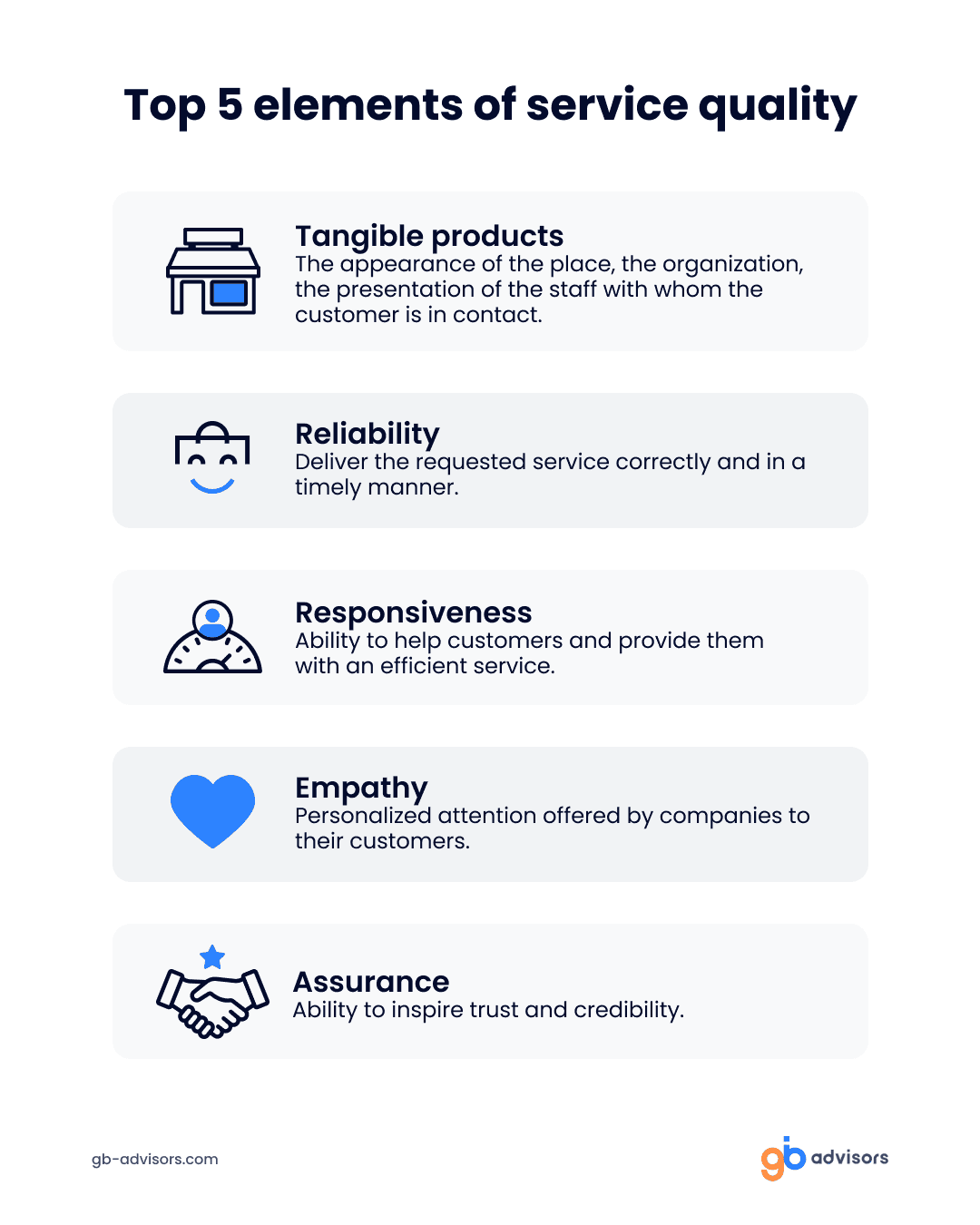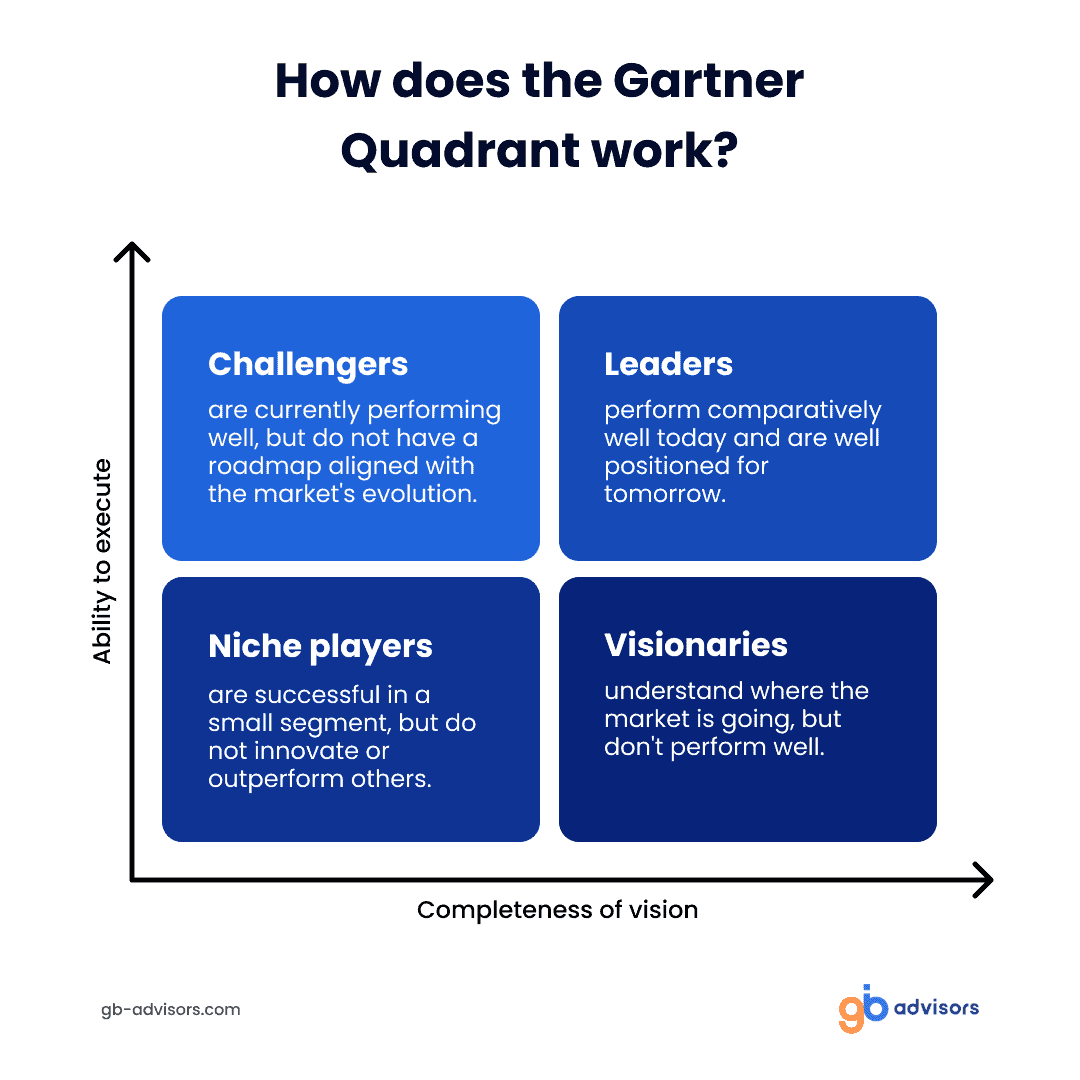Whether you are new to IT management or a decorated veteran, the Gartner Magic Quadrant is one of the pillars you must master if you want to deliver quality service in your company.
This market research is crucial to know how well IT vendors are executing their visions. It will also help you when selecting the right technologies for your organization.
In this blog post, we will take an in-depth look at this report and show you some tips that will help you streamline your decision-making process. Let’s start by getting to know the elements that make up this research:
What is the Gartner Quadrant?
The Gartner Quadrant (or Gartner Magic Quadrant) reflects the results of research and studies by the company known as the Gartner Group. This organization focuses on the analysis applied to new trends in the technology market.
The objective of this study is to help you evaluate the quality of service of technology providers and to know how well they perform against Gartner’s vision of the market. For this reason, companies dedicated to the creation and commercialization of technology use it as a comparative guide.

In this report, we can find a list of companies that have stood out for having met the highest quality standards in technology. Therefore, it also serves as a checklist to help improve the solutions offered by IT companies.
Understanding its specifications and interpreting its results is a task that requires discernment. And meeting its standards demands greater dedication. Let’s take a closer look at what it takes to be recognized and awarded by the Gartner Magic Quadrant, and what the advantages of being listed there are.
How does the Gartner Quadrant work?
The Gartner Magic Quadrant is presented graphically on two axes that coincide at a central point. The horizontal axis represents the completeness of the vision that results in benefits for suppliers and customers.
On the other hand, the vertical axis reflects and measures the suppliers’ ability to execute in relation to their knowledge of the market. On these axes, fragments are formed that represent the companies according to their type and products offered in this way:

Now let’s get to know better the types of technology providers detailed in this chart:
Challengers or challengers: They possess a strong ability to execute their projects and serve their customers. However, they show a less complete vision in terms of innovative ideas for the future.
Visionaries: These companies show similar aspects to the leaders located in the upper right quadrant, as they can predict market needs. However, they do not have a solid platform to respond to these needs on a global level.
Niche players: This quadrant brings together companies that have a strong focus on a particular area but lack the integrity of vision and ability to execute. Therefore, they do not innovate above average or outperform others.
Leaders: In this quadrant, we find the strongest companies with strong execution capabilities. These organizations are successful and have the competencies to outperform others in the future.
However, Gartner comments that focusing on this quadrant is not always the best option. As sometimes a niche player can meet needs better than an industry leader. Thus, it all depends on how each vendor aligns with your business objectives.
What its the interactive features?
Companies can use the interactive features of the Gartner Magic Quadrant to create a view that reflects their business objectives, needs, and priorities.
Likewise, this functionality will help you adjust the scores applied to each of the evaluation criteria. As a result, you will be able to generate a new customized chart according to the type of customer and market.
The Gartner Magic Quadrant also analyzes the opinion of your experts and the ratings provided by Peer Insight users in a single study. Therefore, you can find out what other professionals think about the digital solutions they have implemented and use every day.
What are the advantages of the Gartner Magic Quadrant?
The information provided by this methodical benchmarking study provides a customized view of the market based on the criteria most important to your organization. This enables companies to:
- Quickly insight into the technology vendors currently competing in the market. It also provides insight into their ability to meet the needs of users today and in the future.
- Understand how technology suppliers in an industry are positioned competitively. As well as the strategies they use to capture end-user attention.
- Compare the strengths and weaknesses of a technology provider to meet the needs of a specific company.

All of this will allow you to streamline your short- and long-term planning to overcome your business challenges. By analyzing the elements of the Gartner Magic Quadrant, IT leaders can also make strategic decisions based on their current situation.
So, if used correctly, this study can provide valuable information about a company’s marketability. It also shows how it ranks in relation to other organizations in your industry.
If you would like to learn more about this topic or how to increase your company’s profitability, our team of experts is ready to help you. Contact us and get free expert advice.



